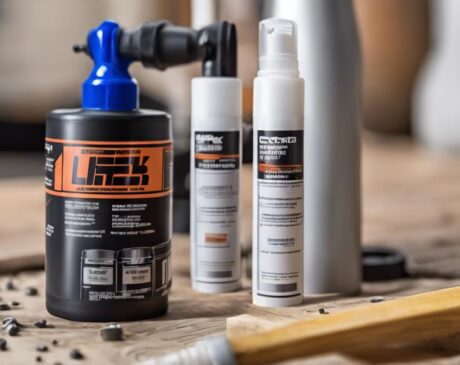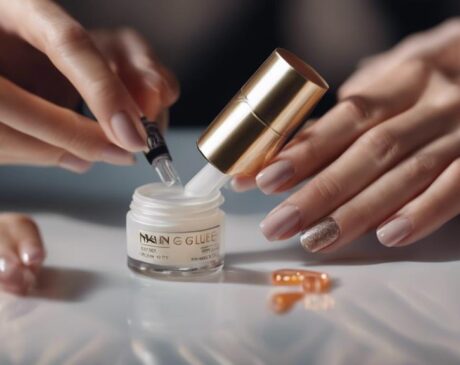Do Nail Drills Damage Nails?
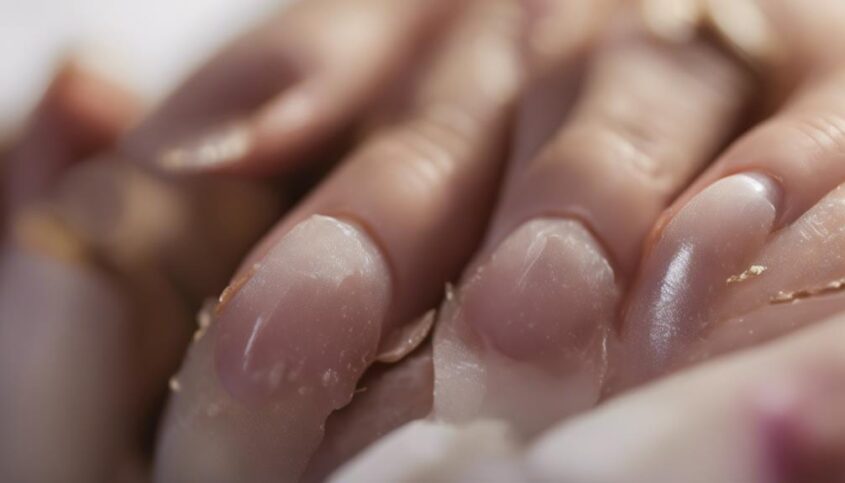
Nail drills can damage nails if used incorrectly. Factors like overheating, wrong drill bit speed, and lack of maintenance can weaken nails. Signs of damage include thinning, brittleness, ridges, and sensitivity. To prevent damage, use proper technique, select the right tools, and maintain nail health. Electric file systems and manual buffing tools are alternatives. Following correct drill techniques and seeking nail advice are vital. Understanding these points can help maintain healthy nails.
Key Takeaways
- Improper nail drill usage can lead to overheating and damage.
- Incorrect drill bit speed selection can weaken nails.
- Neglecting maintenance can introduce harmful bacteria.
- Inadequate cleaning increases infection risks.
- Using worn-out drill bits can cause nail weakness.
Understanding Nail Drill Mechanism
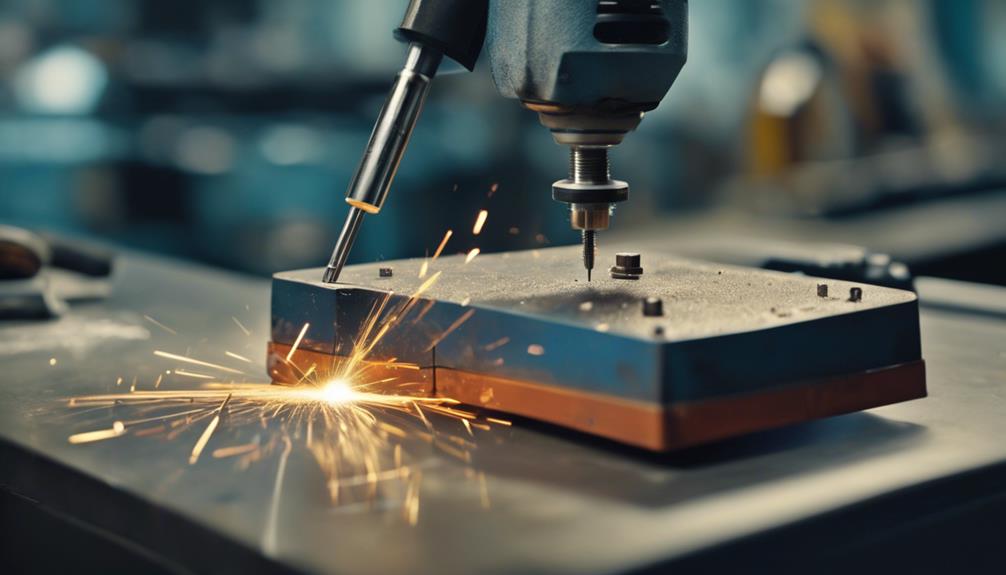
The mechanism behind nail drills plays a crucial role in understanding how they affect the nails. Nail drills, also known as electric files, operate through a rotational motion powered by an electric motor. These devices are equipped with various attachments such as drill bits, sanding bands, and buffing tools that can be interchanged based on the desired nail treatment. The speed and direction of the nail drill can be controlled to cater to different nail types and procedures, providing versatility and precision in nail care practices.
Understanding the intricacies of nail drill mechanisms is essential for professionals in the beauty industry to deliver efficient and effective nail services. By mastering the operation of nail drills, technicians can minimize the risk of potential nail damage and enhance the overall experience for their clients. Innovation in nail drill technology has led to advancements in design, ergonomics, and performance, allowing for safer and more precise nail treatments. As the demand for nail care services continues to grow, staying informed about the latest nail drill technologies can help professionals elevate their skills and meet the evolving needs of their clientele.
Potential Nail Damage Factors
Factors contributing to potential nail damage include improper nail drill usage and inadequate maintenance practices. Improper nail drill usage, such as applying too much pressure or using the wrong drill bit speed, can lead to overheating of the nail plate, causing damage and weakening the nail structure. Additionally, using a nail drill without the proper training or knowledge can result in accidental cuts, scratches, or over-filing of the nails, leading to potential infections or permanent damage.
Furthermore, inadequate maintenance practices, such as failing to clean and sanitize the nail drill properly between uses, can introduce harmful bacteria and fungi to the nails, increasing the risk of infections and other nail problems. Neglecting to regularly replace worn-out drill bits can also cause rough edges or uneven filing, which may weaken the nails over time.
To prevent potential nail damage, it is crucial to educate oneself on proper nail drill techniques, invest in high-quality tools, and maintain strict hygiene practices to ensure the health and integrity of the nails.
Signs of Nail Damage
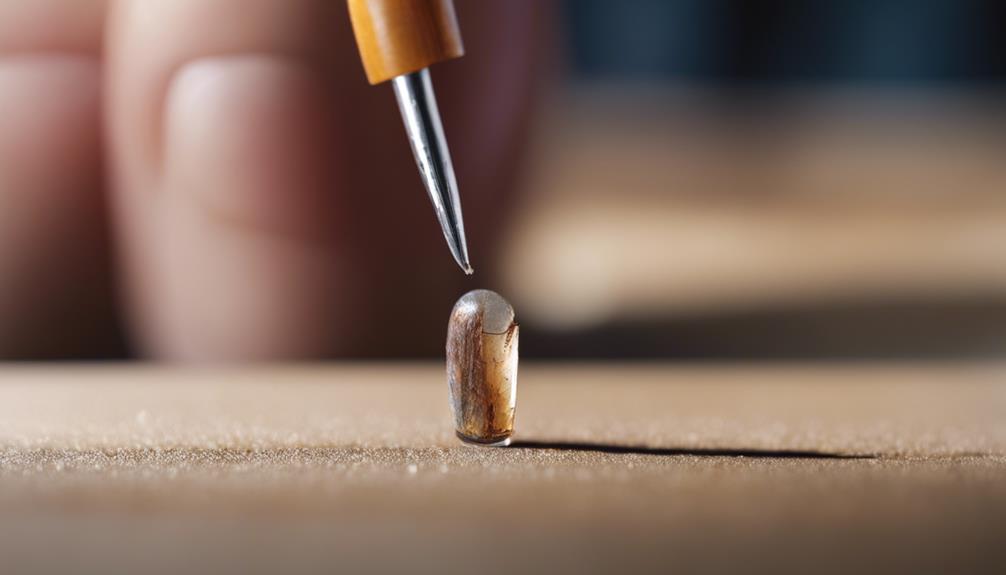
When it comes to nail damage, signs such as nail thinning and weakness are crucial indicators of potential issues. Recognizing these signs early on can help prevent further damage and promote healthier nails in the long run. Understanding these warning signs is essential for maintaining optimal nail health.
Nail Thinning
Experiencing a reduction in nail thickness can be a clear indicator of potential nail damage. This thinning can result from various factors, such as overuse of nail drills or improper nail care practices. Signs of nail thinning include:
- Brittle nails that easily break or split.
- Visible ridges or lines running along the nail surface.
- Increased sensitivity or pain when pressure is applied to the nail.
Monitoring changes in nail thickness is crucial in maintaining nail health. Seeking professional advice and adopting innovative nail care techniques can help prevent further damage and promote the growth of stronger, healthier nails.
Nail Weakness
Nail weakness, a common manifestation of nail damage, is often characterized by a lack of resilience and strength in the nails. When nails lack their usual strength, they become prone to breakage, splitting, and peeling. Visibly thin or brittle nails are indicators of underlying weakness that can result from various factors, such as excessive use of nail drills or harsh chemicals. Additionally, environmental factors like prolonged exposure to water or chemicals can exacerbate nail weakness. To combat this issue, incorporating strengthening treatments containing ingredients like biotin, keratin, or vitamin E can help restore nail integrity. It is crucial to address nail weakness promptly to prevent further damage and promote healthy nail growth.
Preventing Nail Drill Damage
To prevent nail drill damage, it is crucial to prioritize proper technique and nail health protection. By using the drill correctly and ensuring that the nails are adequately cared for, individuals can minimize the risk of damage and maintain the health of their nails. Implementing these practices is essential in safeguarding against potential harm caused by nail drills.
Proper Technique Importance
Utilizing correct technique when operating a nail drill is paramount in minimizing the risk of nail damage. To ensure precision and safety, consider the following:
- Proper Speed Control: Adjust the drill speed according to the task at hand, avoiding excessive pressure on the nails.
- Gentle Pressure Application: Maintain a light touch when using the drill to prevent over-filing or damaging the nail bed.
- Consistent Movement: Keep the drill moving continuously to prevent heat buildup and allow for even filing.
Nail Health Protection
Safeguarding the well-being of nails during nail drilling procedures is essential to prevent damage and maintain overall nail health. Implementing protective measures can help minimize the risks associated with nail drills. Consider the following strategies:
| Protection Measure | Description |
|---|---|
| Use of Proper Drill Bits | Selecting the right drill bit size and material can reduce the likelihood of nail damage. |
| Regular Moisturizing | Keeping the nails and surrounding skin hydrated can enhance nail flexibility and resilience. |
| Monitoring Speed and Pressure | Controlling the speed and pressure applied during drilling can prevent excessive friction and heat buildup. |
Nail Drill Alternatives
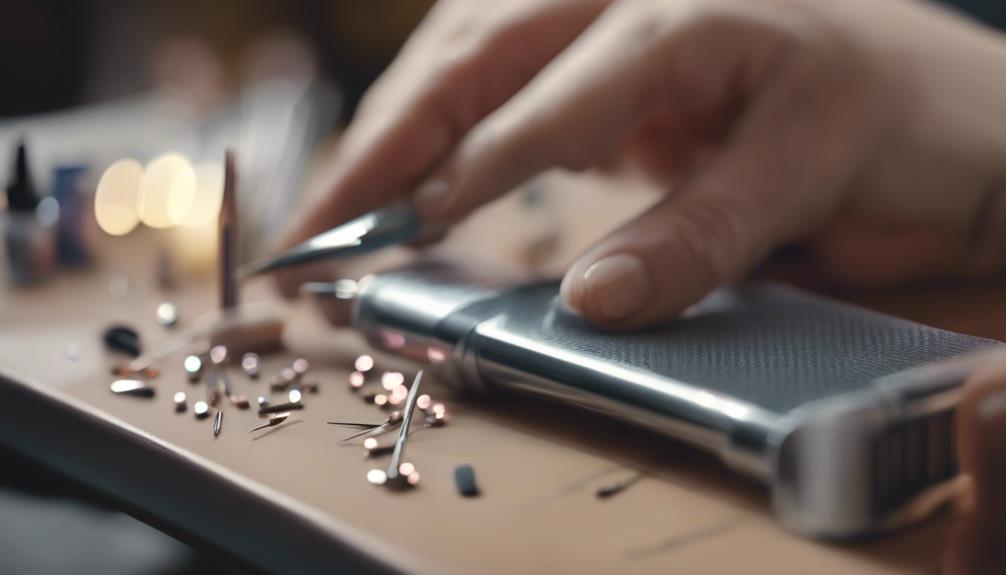
What are some effective alternatives to nail drills for maintaining healthy nails? While nail drills can be efficient, some individuals prefer gentler methods for nail care. Luckily, there are innovative alternatives available:
- Electric File Systems: Electric file systems offer precision and efficiency similar to nail drills but with adjustable speeds and various attachments to cater to different nail care needs. These systems are gentle on the nails while still providing the desired results.
- Manual Buffing Tools: Manual buffing tools, such as buffer blocks or buffing files, are excellent alternatives to nail drills for smoothing the nail surface and achieving a natural shine. Buffing helps improve blood circulation to the nail bed, promoting healthier nail growth.
- Chemical-Free Nail Strengtheners: Opting for chemical-free nail strengtheners and treatments can help maintain nail health without the need for aggressive filing or drilling. These strengtheners often contain nourishing ingredients that promote strong and resilient nails without causing damage.
Professional Nail Drill Usage
Professional nail drill usage requires skillful handling and thorough understanding of the tool's functions to ensure optimal results and minimize the risk of damage to the nails. Nail technicians must be trained in the proper techniques for using a nail drill, including selecting the right drill bits, controlling the speed and pressure, and knowing when to switch between different bits for specific tasks. Utilizing a nail drill can offer benefits such as faster and more precise nail shaping, efficient removal of gel polish or acrylics, and smoothing out ridges or imperfections on the nail surface.
It is essential for professionals to prioritize safety and nail health while using a drill. This involves ensuring the drill is properly sanitized between clients to prevent infections, using the correct speed settings to avoid overheating and damaging the nail plate, and being cautious around the cuticle area to prevent injuries. Continuous education and practice are key to mastering nail drill techniques and delivering exceptional results to clients while maintaining the health and integrity of their nails.
Seeking Nail Health Advice

When seeking advice on nail health, it is crucial to consult reputable sources and professionals in the field to ensure accurate and reliable information. With the ever-evolving trends and technologies in nail care, staying informed is key to maintaining healthy and beautiful nails. Here are some innovative ways to seek nail health advice:
- Online Forums: Engage in online communities dedicated to nail care where enthusiasts and professionals share insights and experiences.
- Virtual Consultations: Take advantage of virtual consultations with dermatologists or nail technicians for personalized advice tailored to your specific nail concerns.
- Podcasts and Webinars: Stay updated on the latest nail health trends by listening to podcasts or attending webinars hosted by industry experts.
Frequently Asked Questions
Are Nail Drills Safe for Use on Natural Nails?
Nail drills, when used by skilled professionals with proper technique and care, can be safe for natural nails. Regular maintenance, appropriate speed, and correct bit attachments are crucial for minimizing any potential risks.
Can Nail Drills Cause Long-Term Damage to the Nail Bed?
Nail drills, when used improperly or excessively, can potentially lead to long-term damage to the nail bed. It is crucial to follow proper techniques, limit frequency, and prioritize nail health to minimize risks.
How Often Should Nail Drills Be Used to Prevent Damage?
To maintain nail health, limit nail drill usage to once every 2-3 weeks. Alternate with manual filing to prevent damage. Prioritize quality drills with adjustable speeds and fine attachments. Regularly hydrate nails and cuticles for optimal health.
What Are the Common Misconceptions About Nail Drills and Nail Damage?
Common misconceptions about nail drills and nail damage often revolve around the belief that all nail drills are harmful. However, with proper training, technique, and maintenance, nail drills can be used safely and effectively in nail care practices.
Are There Any Specific Nail Care Products That Can Help Repair Damage Caused by Nail Drills?
There are nail care products designed to repair damage caused by nail drills. These innovative formulas often contain strengthening ingredients like keratin and biotin to help restore and nourish the nails, promoting healthier growth and recovery.


